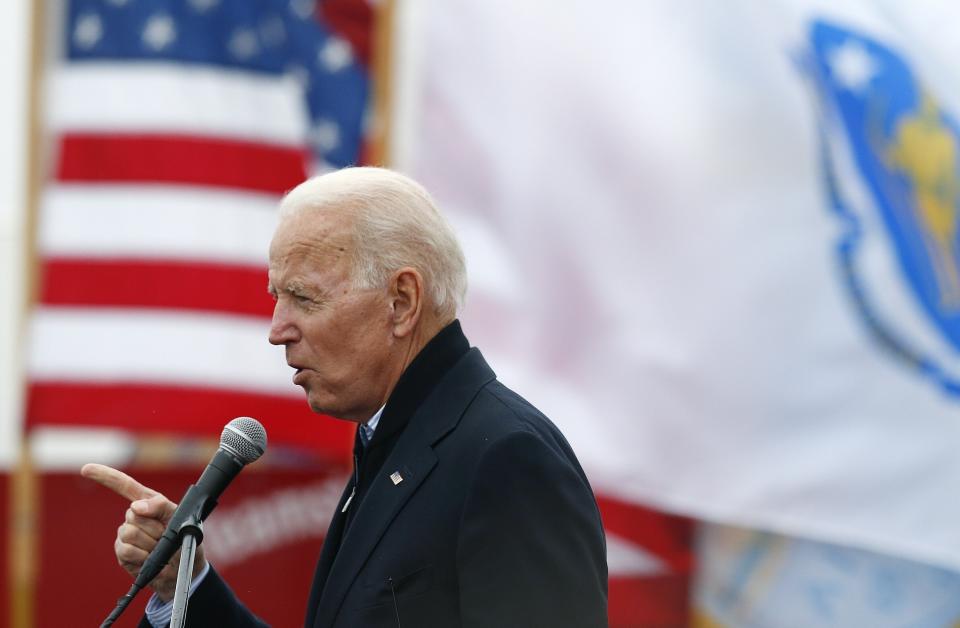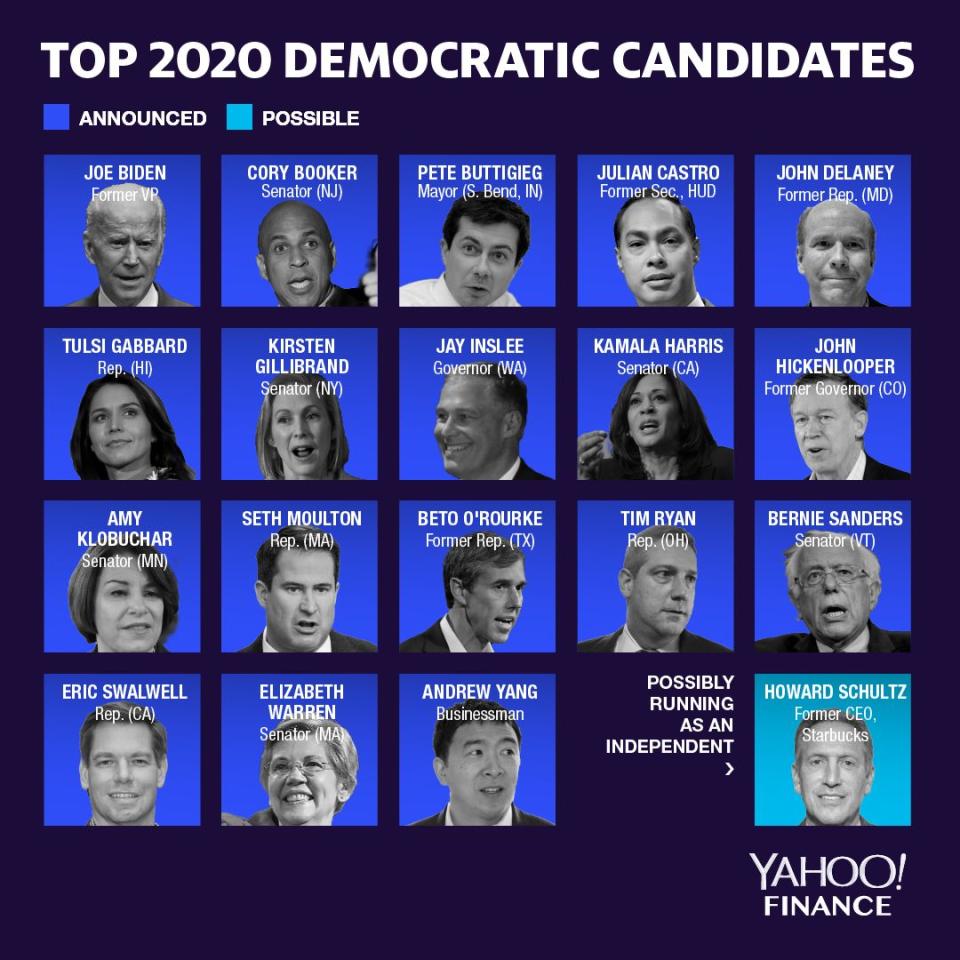Joe Biden’s economic views need a major update
He claims to have the “most progressive record” of any Democrat running for president. But now that Joe Biden is officially a 2020 presidential candidate, he has a lot of catching up to do.
Biden, 76, served in the Senate for 36 years, and he has run for president twice —including in 2008, when he withdrew early after a poor showing in the Iowa caucus. Barack Obama named Biden his running mate, of course, and Biden served eight years as Obama’s vice president.
As a candidate in 2008, Biden stressed his experience on foreign affairs, as chairman of the Senate Foreign Relations Committee. His economic ideas included expanded health care coverage that was more modest than the 2010 Affordable Care Act, which became an Obama legacy. To come up with funding for his health plan, Biden proposed higher taxes on the wealthy, higher capital gains taxes and the elimination of the “carried interest loophole,” which mainly benefits private-equity investors.
Biden has also called for raising the cap on the portion of income subject to the Social Security tax, to help keep the program solvent. His biggest single source of funding for the 2008 presidential campaign was law firms, followed by finance and real estate.
Biden was generally in step with Obama’s policies, so Obama’s last annual budget proposal— which typically reveals a president’s policy wish list — might be the most recent guide to Biden’s economic views. The White House budget proposal for fiscal year 2017, published early in 2016, called for modest tax cuts for working families, a variety of alternative-energy programs, improved worker training for the digital economy and universal preschool. On health care, it highlighted expanded coverage under the Affordable Care Act, but called for only marginal improvements on the ACA, rather than further sweeping changes.

Democrats moving left
Democratic priorities have changed substantially in just a few years. “Joe Biden ... would presumably pursue the same (relatively) business-friendly and free-trade policies as Presidents Barack Obama and Bill Clinton before him,” Paul Ashworth of Capital Economics wrote recently. “We suspect that he will be forced to move considerably to the left to see off the primary challengers from the party’s progressive wing.”
Many prominent Democrats, for instance, now back a “Medicare for all” plan that was a fringe idea when Bernie Sanders introduced it during the 2016 campaign. “Medicare for all” would essentially supersede the ACA, since it would cover everybody. But it would eliminate private insurance, forcing people who like those plans into a government program instead, and require sharply higher taxes. That’s why some Democrats support “Medicare for more”-type plans that would leave the private system in place, and give people without employer-based coverage a public option.

To be a viable candidate, Biden would have to move beyond the ACA and endorse new ways to help millions of Americans who still don’t have coverage or find existing coverage too expensive. As a center-left Democrat for most of his career, Biden’s inclination might be Medicare for more. But he could also aim for the Bernie Sanders wing by saying the time has finally come for a full-blown single-payer program. Memo to voters: Always ask politicians how they’d pay for a giant single-payer plan.
Biden faces the same dilemma on global warming. Many Democrats have endorsed the Green New Deal, which would dramatically force the transportation and energy sectors away from fossil fuels, with heavy-handed government intervention. Obama preferred government incentives, such as research tax credits and higher fuel-economy incentives, while letting industry figure out how best to achieve clean-energy targets. Obama was also president when the United States joined the Paris climate accord, which President Trump has withdrawn from. Biden needs a plan that will win over young people fired up about global warming, without alienating business leaders.
Another big area of change has been trade. Obama, for instance, championed the Trans Pacific Partnership, a 12-nation free-trade pact meant to counter China’s growing heft. But Sanders trashed the deal during the 2016 campaign, and Hillary Clinton, who had supported it as Obama’s Secretary of State, turned against it as well. Trump also lambasted the TPP, and withdrew the United States from the deal after becoming president—even though trade experts say that weakened, rather than strengthened, his leverage in the ongoing trade dispute with China. Biden will either have to make a persuasive argument in favor of Obamaesque free trade deals, or explain his shift if he becomes more protectionist.
One thing Biden seems sure to do is bash Trump. Biden has famously said he’d “beat the hell out of Trump” (if only in high school), and Democratic voters may welcome a fighter eager to combat Trump on his terms. But voters want ideas, too, and Biden’s are old. To win, Biden may have to to move in the direction of younger, more liberal voters, while persuading some of those voters to move closer to him.
Confidential tip line: [email protected]. Encrypted communication available. Click here to get Rick’s stories by email.
Read more:
The Mueller report thoroughly impugns Trump
Winter is coming for big business
Why Trump wants to manipulate the Federal Reserve
Why voters will reject the "Green New Deal"
Voters are souring on “Medicare for all”
3 problems with Elizabeth Warren’s wealth tax
Rick Newman is the author of four books, including “Rebounders: How Winners Pivot from Setback to Success.” Follow him on Twitter: @rickjnewman
